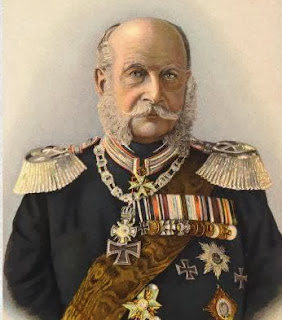Chapters nine through twelve in Hagen Schulze’s book, Germany: A New History, deal with WWI,
the Weimar Republic, the Third Reich, and WWII. During this time period, there
were many radical changes in Germany. These changes influenced how the German
people viewed themselves and others around the world. One issue that I found
particularly interesting was the rise of the Weimar Republic, the first
democracy of Germany.
 | ||
| map of the Weimar Republic |
The Weimar Republic
only lasted a brief fourteen years though. I never realized just how weak the
government was. According to Schulze, the republic faced a succession of
sixteen different governments in only fourteen years (207). When the government
appeared weak, the voters would switch to different parties that seemed stronger.
The republic was not built on a strong foundation. It can be said that, “first
of all, it was a catastrophe that the first German democracy emerged as the
product not of an elected parliament and strong political parties but rather of
a general staff at its wits’ end. Second, the Weimar democracy came into being
at the worst possible moment, in the hour of defeat, a circumstance that would
dog its existence” (197). The new Weimar Republic had emerged out of necessity
for a new government, after the Germans suffered a bitter defeat in WWI. As was
expected, the Germans would have to pay war reparations to the Allies. What
they didn’t anticipate was how much would be asked of them.
 |
| flag of the Weimar Republic |
The Allies were demanding that the Germans forfeit twenty
percent of the German territory, ten percent of the population, one-third of
the coal production, one-quarter of the grain and potato production, four-fifths
of the iron ore reserves, all of the colonies, and the commercial fleet (203).
Germany would lose lots of land and resources and be demilitarized, as was
demanded in the Treaty of Versailles. The Germans, as a people, were almost entirely
opposed to these terms that would leave them unable to defend themselves. To make
matters worse, the treaty was signed in the Hall of Mirrors, exactly where the
founding of the German Empire had been declared (204). This made the defeat
even more humiliating. By this time, the Germans had lost much of their military
power, been economically ruined, and politically humiliated.
 |
| woman burning money (cheaper than buying wood due to inflation) |
This all greatly affected the public mood. A combination of “disappointment
over the terms of the peace treaty, continuing economic difficulties, and the
dreary, oppressive conditions of everyday life” altered the mood of the public
(205). The people probably felt that they were victims of the greed of the
Allies. They probably also felt that they had lost part of their German
identity. They were humiliated and all of these demanded changes would greatly
impact the lives of every German. They would suffer much greater losses than
they believed they deserved. The resulting crisis years fostered rapid economic
and social changes, including super inflation. Therefore, the public became much
more susceptible to propaganda. Many
blamed this crisis on democracy in general and the republic, while others viewed
their government with suspicion (226). With the changing mood it’s not
surprising that Hitler was able to manipulate the emotional needs of the public
and come into power.
This tumultuous time period would prove to forever change
German identity. The outbreak of war and the weak structure of the republic
would eventually lead to Hitler’s reign. These were hard times for the people.
Public mood had shifted from jubilance to somberness to remorse. In the course of only thirty-five years from
1914 to 1949, Germany had transformed from a democracy to a dictatorship and
entered two world wars. German identity had shifted. Their world view, the view
of themselves and others, would never be the same as before.
Word Count: 622



